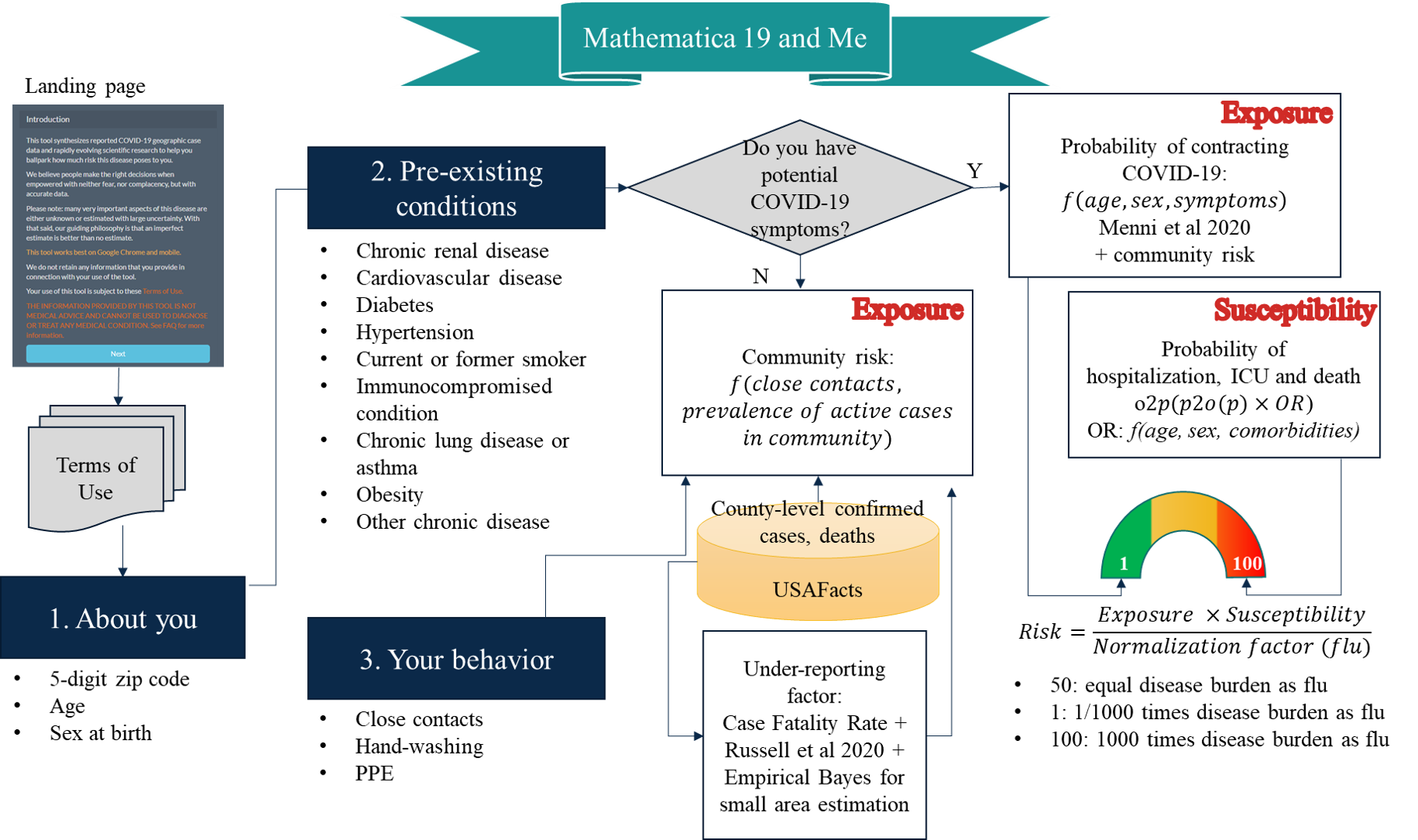19andMe is an interactive dashboard for users to calculate their individualized risk score of contracting COVID-19 and related adverse health outcomes. https://19andme.covid19.mathematica.org/
How 19andMe Works?
19andMe takes user input on where you live, who you are, and what you do in the pandemic, uses the best available science to provide a ballpark estimation on the how likely someone with similar characteristics like you may contract COVID-19, and if infected, how likely is the outcome going to be severe. Please see the "Methods" tab in the app for more details on our methodology.
- app/
- R Scripts for different modules of the app
- Google Analytics plug-in
- CSS
- www/
- Mathematica logo
- How 19andMe works
- Cindy Hu - product owner
- Emma Pendl-Robinson - full-stack developer
- Erin Lipman - back-end developer and data engineer
- Jennifer Starling - validation lead
- Margaret Luo - API support and technical consultant
- Max Dulieu - API tech lead
- George Luo - front-end developer
- Arpan Bhattacharya, George Gallo - AWS architects
- Aaron White - technical consultant
- Sean Kirk - DevOps engineer
- Kelsey Skvoretz, Fei Xing - QA reviewers
- Matt Salganik - expert reviewer
We appreciate additional support towards this project from Alex Bohl, Dave Peters, and Matt Gillingham.
For more information, please contact Cindy Hu at [email protected] or at [email protected].
This project is built to use Docker and docker-compose to make development easy across all machines and remove host machine configuration as a potential issue. Use docker-compose to get started quickly. You will need to install docker and docker-compose.
Use docker-compose to build the image:
docker-compose build
Remember that docker images are immutable once built. Only changes to files in /home/rstudio will persist after restarts.
To create an RStudio environment preloaded with all dependencies
- Create a
.envfile that defines the desired RStudio password, e.g.
PASSWORD=mystrongpassword
There is an example sample.env you can also use. Copy it and rename it to .env.
-
Email the Mathematica Communications team to get an x-api-key. We will use this to make POST requests for the covid-risk-score-api. Add X_API_KEY to your
.Renvironfile. -
Start the environment
docker-compose up -
Visit
http://localhost:8787and start hacking. -
Keep shiny app code in
app.R. Launch it for development withshiny::runApp('app.R').
Utilize the attached Dockerfile for a simple but efficient deployment setup.
